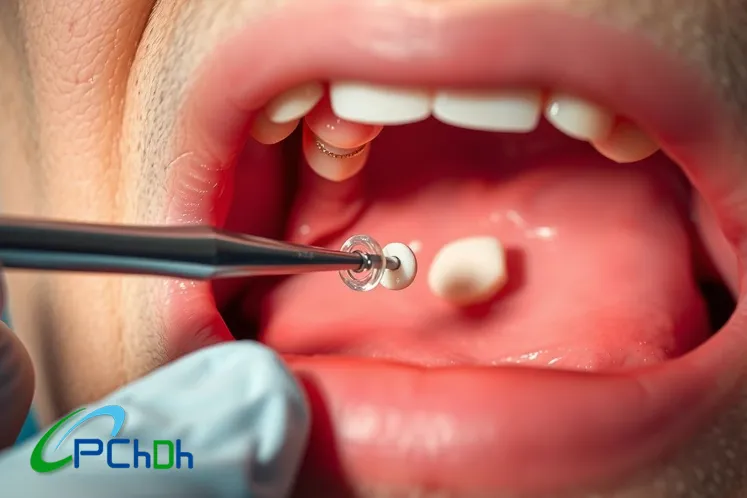Many people experience sore throats, bad breath, or a feeling that something is stuck in their throat. These symptoms can be caused by tonsil stones, also called tonsilloliths. Tonsil stones are small, calcified deposits that form in the crevices of the tonsils. They are quite common and affect people of all ages. In this article we explain about tonsil stone removal tool.
Having tonsil stones can make your mouth feel uncomfortable and cause bad breath that won’t go away. While they might seem harmless, trying to remove them without proper tools can be risky. Using the right equipment ensures safety and success. This guide will cover the best tonsil stone removal tool, how to use it correctly, and tips to keep your mouth healthy.
Understanding Tonsil Stones and Their Removal
What Are Tonsil Stones?
Tonsil stones are tiny, hard lumps that form in the tonsil pockets. These deposits are made of bacteria, mucus, dead cells, and minerals. They range in size from tiny grains to larger, visible stones.
Most people notice white or yellowish lumps on or inside their tonsils. Common signs include bad breath, a sore throat, or a feeling that something is stuck. Often, they are discovered during a sore throat or when inspecting the mouth.
Risks of DIY Removal Without Proper Tools
Trying to pick out tonsil stones with fingers or household items may seem easy, but it can hurt and cause infection. Without proper tools, you risk damaging your tonsils or pushing bacteria deeper.
Some symptoms like bleeding, severe pain, or swelling are signs you should see a doctor. Infections can develop if stones or debris get infected. Professional help is safest if you’re unsure or if the stones keep coming back.

Types of Tonsil Stone Removal Tool
Manual Extraction Tools
Manual tools include tongue scrapers or graspers that help remove stones gently. These are simple devices like small spoons or picks made for this purpose.
Pros:
- Easy to handle
- Inexpensive
- Reusable if cleaned properly
Cons:
- Risk of injury if used incorrectly
- Not as effective for large or deep stones
Specialized Tonsil Stone Removal Kits
Complete kits usually contain curettes, scoopers, and mirrors designed for tonsil cleaning. These kits are made to be comfortable to hold and use safely.
Features to check:
- Ergonomic design for easy grip
- Sterilizable parts
- Multiple tools for different-sized stones
Ultrasonic and Electric Devices
High-tech options include ultrasonic irrigators or electric oral aspirators. These tools use vibrations or water jets to loosen and remove stones without touching the tonsils directly.
Advantages:
- Gentle on tissues
- Less effort required
- Suitable for recurring stones
When to consider: If DIY methods fail or stones are hard to reach.
DIY and Natural Removal Aids
Some folks try using household items like water flossers, cotton swabs, or even a clean finger to dislodge stones.
Risks:
- Can trigger gag reflex or cause injury
- Push stones further into crypts
- Increase infection chances
Tip: Use water irrigation devices cautiously and avoid aggressive scraping or poking.
How to Safely Use Tonsil Stone Removal Tool
Preparation and Safety Precautions
Before attempting removal:
- Wash your hands thoroughly
- Sterilize tools with alcohol or boiling water
- Gargle with warm salt water to loosen stones
- Use good lighting and a mirror
Avoid self-removal if you’re sick, have a sore throat, or experience bleeding. If unsure, always consult a healthcare professional.
Step-by-Step Guide for Manual Removal
- Stand in front of a mirror with good lighting.
- Gently open your mouth wide and locate the stones.
- Use a clean, sterilized tool—like a curette—to gently push or lift the stone.
- Be gentle—tonsils are sensitive, and force can cause damage.
- Rinse your mouth with salt water afterward to clear debris.
- Repeat if you notice more stones or debris.
Using Electric or Ultrasonic Devices
- Read the user manual before operation.
- Position the device gently near the stone.
- Use the recommended setting—usually low power is best.
- Keep the device moving to avoid tissue damage.
- Rinse mouth after use to remove loosened debris.
- Clean the device thoroughly after each use.
When to Seek Medical Assistance
See a doctor if:
- You experience bleeding or severe pain
- Stones keep returning
- You develop signs of infection, like fever or swelling
- You’re unsure how to proceed safely
Professional removal might involve gentle laser or surgical removal techniques.
Tips for Preventing Tonsil Stones and Maintaining Oral Health
Good Oral Hygiene Practices
- Brush your teeth twice a day thoroughly
- Floss daily to remove bacteria between teeth
- Gargle with an antiseptic mouthwash to kill germs
- Clean your tongue with a scraper or toothbrush
Dietary and Lifestyle Changes
- Drink plenty of water to stay hydrated
- Limit foods that promote bacteria, like sugary or dairy-heavy foods
- Avoid smoking, which can irritate the throat and promote stone formation
Regular Dental Check-Ups
Seeing your dentist regularly helps catch early signs of tonsil stones. Professional cleanings keep your mouth healthy and reduce bacteria build-up.
Conclusion
Removing tonsil stones safely depends on using the right tools and techniques. Manual tools, specialized kits, and ultrasonic devices each have their place. Always prioritize safety—know your limits and seek professional help when needed.
Preventing future stones is easier than dealing with recurring problems. Maintain a good oral routine, stay hydrated, and see your dentist regularly. With the proper approach, tonsil stones can be managed effectively without discomfort or risk.
Taking care of your mouth today keeps bad breath, sore throats, and discomfort at bay. Stay informed and gentle—your throat will thank you.


